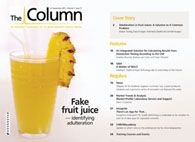Croco-diesel
Concerns over the effect that the increasing use of soy beans and other crops for biodiesel could have on food and agricultural markets has led scientists to an unlikely new source: alligator fat.

Concerns over the effect that the increasing use of soy beans and other crops for biodiesel could have on food and agricultural markets has led scientists to an unlikely new source: alligator fat.
According to a study,1 700 million gallons of biodiesel were produced in the US in 2008; but as soybean prices have risen by nearly $3 per bushel between 2003 and 2009 alternatives are being sought, which include sewage and leftover oil from deep fat fryers in fast food restaurants.
In Louisiana and Florida, alligators are farmed for their skin and meat, and this industry has to dispose of 15 million pounds of fat annually. Due to the fat’s high lipid content it was identified as a potential source of biodiesel, which researchers have refined to determine its suitability. Recovery of the lipids from the fat tissue was performed by solvent extraction, as well as microwave rendering, which resulted in a recovery of 61% oil by weight of the fat tissue. The fatty acid composition of the samples was then determined using GC–MS. This analysis identified three dominant fatty acids, which the study reports have similar characteristics tovegetables commonly used in biodiesel. The study concluded that the quality of the biodiesel produced was compatible with ASTM specifications, and that as the fat is usually a waste product, its use should result in reduced processing costs.
1. S. Ayalasomayajula et al., Ind. Eng. Chem. Res., online (2011).
This story originally appeared in The Column. Click here to view that issue.

Measuring Vitamin K1 Concentrations in Dogs with Chronic Enteropathy Using LC–MS/MS
May 14th 2025A joint study between the University of Tennessee (Knoxville, Tennessee) and the University of Pennsylvania School of Veterinary Medicine (Philadelphia, Pennsylvania) compared directly measured vitamin K1 (vitK1) concentrations in healthy dogs and dogs with chronic enteropathy (CE) using liquid chromatography tandem mass spectrometry (LC–MS/MS); they also investigated whether supplementation of vitK1 in dogs with CE would significantly increase vitK1 concentrations.
HPLC 2025 Preview: Fundamentally Speaking (Part 2)
May 14th 2025Michael Lämmerhofer from the Institute of Pharmaceutical Sciences, University of Tübingen, Germany, spoke to JFK Huber Lecture Award winner of 2024 Torgny Fornstedt, professor in analytical chemistry and leader of the Fundamental Separation Science Group, Karlstad University, Sweden, about his pioneering work in high performance liquid chromatography (HPLC) with a focus on fundamentals, ion-pair chromatography, and oligonucleotide applications.

.png&w=3840&q=75)

.png&w=3840&q=75)



.png&w=3840&q=75)



.png&w=3840&q=75)











